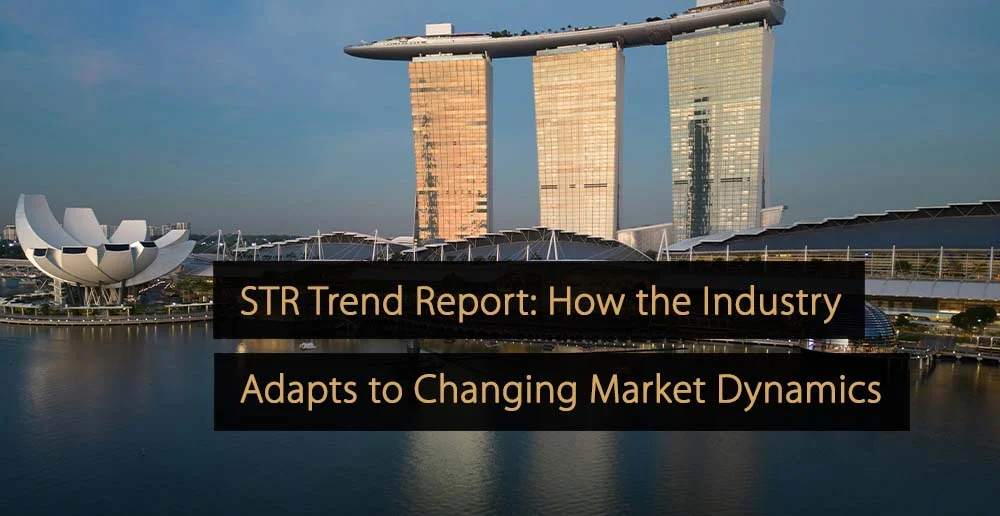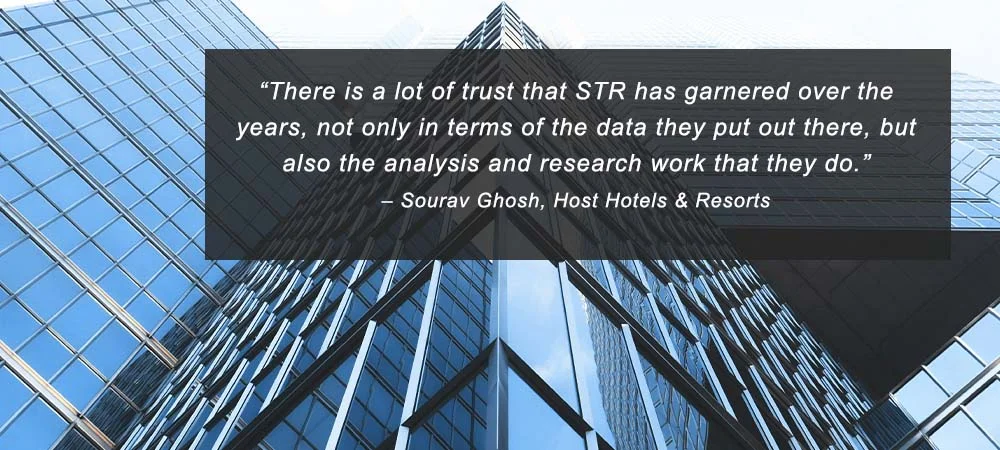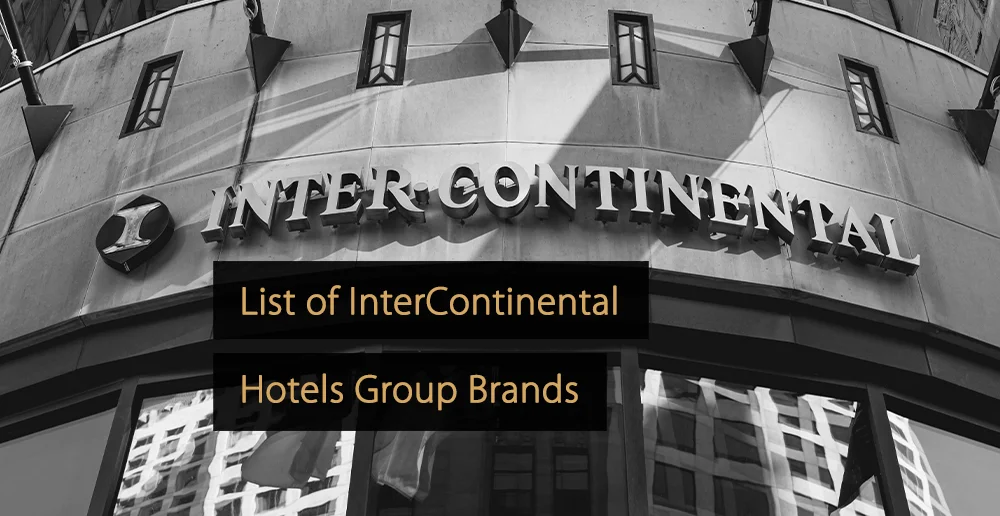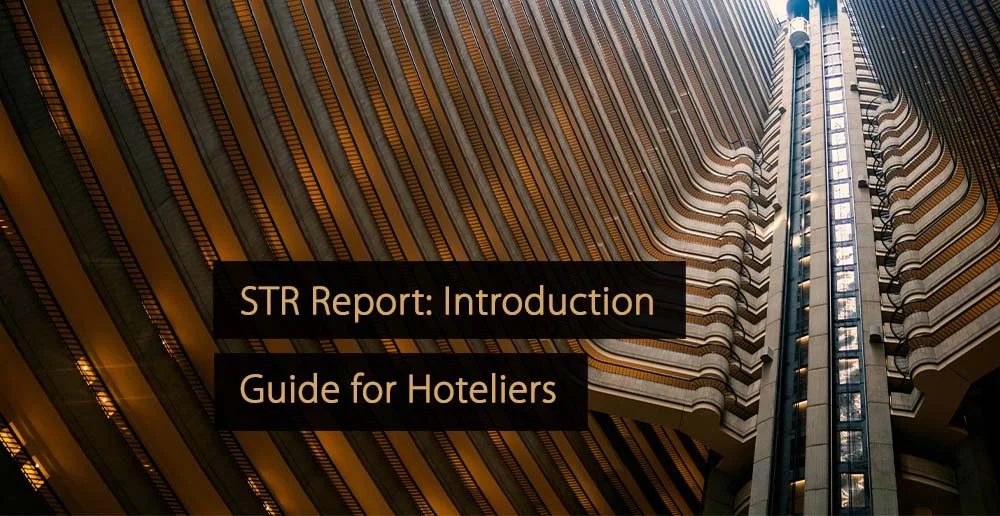An STR Trend Report is a useful tool for understanding market dynamics within the hotel industry. In this article, you will learn more about what a STR Trend Report is, how it works, why it is so popular within the industry, and how it can be used to understand and adapt to changing market conditions and realities.
Table of Contents:
- The Hotel Industry: An Overview
- What is an STR Trend Report?
- Why Does an STR Trend Report Matter?
- Key STR Trend Report Areas and Metrics
- How to Analyze an STR Trend Report
- Understand the Key Metrics
- Review the Summary and Overview
- Examine Historical Data
- Evaluate Market Share
- Conduct Segmentation Analysis
- Review Supply and Demand Metrics
- Carry Out Geographical Analysis
- Look for Rate Strategies
- Identify Influencing Factors
- Compare Year-over-Year and Benchmark
- Prioritize Forecasting and Outlooks
- Seek Context and Explanations
- Make Strategic Decisions
- Stay Up-to-Date With STR Trend Reports
- The Future of STR Trend Reporting
- All You Should Know About Hotel Management
- Keeping Up With Emerging Hotel Technology
- The Latest Trends for the Hotel Industry
The Hotel Industry: An Overview
An STR Trend Report for hotels is valuable for monitoring market dynamics as they shift, but it is important to understand that the reports are used throughout the hotel industry. Despite its name, the hotel industry includes hotels, motels, B&Bs, hostels, holiday cottages, inns, and other short-term accommodations for guests.
In the “Hotel Industry: Everything You Need to Know About Hotels!” guide, you will find a complete overview of the industry, including a more complete definition and a look at the most popular business types.
What is an STR Trend Report?
The STR Trend Report is a report offered by STR, Inc. that provides hotels with valuable data covering a particular market, submarket, country, city, geographical area, or other specified group of businesses within the hotel industry. It is one of several report types offered by STR, Inc. and covers a number of common performance metrics.
While other STR report types are available, an STR Trend Report for hotels is especially useful for monitoring market conditions and understanding trends affecting a particular market or submarket. Customers can select the markets they want reports for, including North America, Europe, Asia Pacific, Middle East, Africa, etc.
STR, Inc. is a hotel research and analytics company, originally founded under the name Smith Travel Research. The company has a strong reputation for providing hotels with valuable insights and data, which can be used for everything from monitoring market conditions to benchmarking, analyzing performance, and optimizing hotel marketing strategies.
Why Does an STR Trend Report Matter?
The modern hotel industry relies heavily on the collection and analysis of data. An STR Trend Report provides a hotel owner, manager, or marketing department with abundant useful historical and recent information, which can be used to understand your hotel’s performance and the performance of hotels in your chosen market(s).
This matters because good decision-making is based on actual evidence. For instance, if you have information that suggests that other hotels in your compset or submarket are achieving superior results regarding the main key performance indicators, it suggests you may need to make changes to your approach.
An STR Trend Report provides useful information about hotel industry performance and market dynamics, with the data covering a period of up to 10 years. Not only does this provide valuable insights, it also allows you to contextualize your hotel’s performance and understand whether that performance is in keeping with wider patterns.
By analyzing STR Trend Reports regularly, you will have a much better sense of the current state of the hotel industry and your specific market or niche. You can access performance indicators for the wider industry, which can then be used to inform your revenue management, marketing, distribution, and pricing strategies.
An awareness of these industry trends is also essential, because hotels need to adapt to new realities continually. By analyzing and understanding key industry trends, you can better plan for the future, adapt quickly to new market conditions, anticipate and navigate challenges, and adopt the right approach for the right moment.
Key STR Trend Report Areas and Metrics
The following sections break down some of the metrics and areas of interest covered by an STR Trend Report.
Video: What is Occupancy, ADR, and RevPAR?
1. Occupancy Rate
The occupancy rate is a key metric covered by the STR Trend Report. It is displayed as a percentage and shows the proportion of available rooms that have actually been occupied over a specified period. A high occupancy rate indicates that many hotel rooms are being used, while a low rate indicates unused rooms.
The occupancy rate of a market section, or a specific hotel, can be calculated by dividing the number of occupied hotel rooms by the total number of hotel rooms available. Essentially, it is a performance indicator that is concerned with the level of demand for hotel rooms and can be used to inform revenue management strategies.
2. Average Daily Rate (ADR)
The average daily rate metric tracks the average amount of revenue generated from room sales, per occupied room. It can be calculated by dividing the total amount of revenue generated through rooms sold by the number of rooms that have actually been sold. It is a very useful metric for monitoring revenue management trends.
A high ADR for a specific hotel indicates an ability to charge premium prices for hotel rooms. The same applies when looking at an entire market segment, such as hotels in North America, or hotels in a specific group. However, ADR needs to be viewed alongside other metrics, as a high ADR is not, in itself, indicative of high revenue. After all, a hotel could have a high ADR based on selling only a small percentage of its rooms.
3. Revenue Per Available Room (RevPAR)
Revenue per available room is one of the most commonly used KPIs within the industry, so what is RevPAR and why does it matter? Crucially, RevPAR is a metric that takes into consideration both the level of occupancy within a hotel and the amount of revenue being generated by that occupancy. This makes it one of the most vital indicators of hotel revenue management performance and the KPI that often prompts changes in strategy.
The easiest way to calculate RevPAR is to multiply ADR by the occupancy rate. If your RevPAR figure is high, it indicates that you are using the available space in your hotel, generating revenue and attracting guests.
4. Supply and Demand Metrics
An STR Trend Report includes figures for both supply and demand. More simply, supply refers to the number of hotel rooms available in a specific period, while demand refers to the number of rooms sold in the same period.
Tracking supply and demand is among the most crucial revenue management tips for hotels, because it provides a clear overview of current market conditions. If demand for rooms is low compared to supply, hotels may need to either take steps to maximize revenue from the smaller number of guests, or take steps to increase demand.
5. Market Share Data
Finally, if your hotel pays for the benchmarking report rather than the standard STR Trend Report, you will have access to market share data for your hotel compared to the hotels in your competitive set.
As a result, you will be able to track how much of the market you are responsible for and monitor any trends related to these figures. You can also use index numbers to understand whether you are currently achieving your fair share of the market, less than your fair share of the market, or more than your fair share of the market.
How to Analyze an STR Trend Report
Once you receive your STR Trend Report, you need to know how to analyze it and obtain the most critical information. In the sections below, you will have access to some useful tips that can assist you with this:
1. Understand the Key Metrics
The first step to successfully analyzing your STR Trend Report is to make sure you understand what each of the key metrics is actually showing. Occupancy rate is useful for understanding current levels of demand, for example, while RevPAR is useful as a more complete tool for evaluating revenue management performance. All of the metrics provided help you to understand the market dynamics and your own hotel’s performance within that context.
2. Review the Summary and Overview
The summary and overview section of your STR Trend Report helps you to understand the lay of the land quickly. It will offer a broad overview, with the most important KPIs and metrics, so you can see the most significant changes that have occurred since the last report. While you will need to explore the report more fully to get the most from it, this introductory section gives you a basic understanding of what you can expect to learn.
3. Examine Historical Data
One of the most important components of the STR Trend Report is the historical data presented. An STR Trend Report offers a standard six-year overview, with options to extend this to up to 10 years or even more for the North American market. Examining this data is useful for identifying trends, such as changes in demand at different times of the year. The data can help with forecasting and other activities, and provides a basis for comparison with current performance.
4. Evaluate Market Share
The competitive benchmarking report offered by STR, Inc. includes extremely valuable information about the market share of your hotel and the other hotels in your competitive set. This allows you to understand the context of your hotel’s performance within your compset and helps hotel leaders to understand the current and past position of their hotel in the market they are in. In situations where performance is lagging, changes can then be implemented.
5. Conduct Segmentation Analysis
Within an STR Trend Report or benchmarking report, segmentation analysis refers to the segmentation of hotel customers. As a result, hotels can look at their performance in more depth and understand which types of guests are being attracted and which may need to be targeted more effectively. Examples of this include business customers, group bookings, and customers with contract agreements. Using this data, hotels can see a breakdown of their customer base.
Video: STR Report Analysis – Market Segment and Length of Stay [Intermediate]
6. Review Supply and Demand Metrics
Looking carefully into supply and demand metrics within your STR Trend Report for hotels will allow you to understand the relationship between the two better and make intelligent adjustments to your pricing and distribution strategies. Demand refers to the number of rooms sold, while supply refers to the number of rooms available. If demand is low, a common strategy involves reducing prices to encourage more bookings and better using your inventory.
7. Carry Out Geographical Analysis
Another of the big advantages of acquiring an STR Trend Report is the ability to access geographical data, such as a breakdown of performance data for a specific country, region or market. While some trends are relevant across the hotel industry, there will always be a degree of regional variation, and hoteliers need to understand these regional trends and market dynamics too. Geographical analysis of this kind also helps to put current hotel performance into a more relevant context than benchmarking against global or national performance data alone.
8. Look for Rate Strategies
Within your STR Trend Report, you can look closely at the average daily rate (ADR) data provided and use it to conclude pricing strategies being used in your market. For instance, if you notice that the ADR for your market is much lower than your own ADR, you can conclude that you are pricing your rooms higher than your rivals. This will need to be reflected in your service, or you will need to consider reducing prices. It may also be the case that ADR for the region changes significantly for one period due to a nearby event or a major holiday.
9. Identify Influencing Factors
Your STR Trend Report will provide you with data about performance, but this data alone is not enough to base crucial pricing decisions or distribution strategies on. You need to use the data as a jumping-off point for analyzing the market. Think about some of the external factors influencing the data, such as global events, local events, weather patterns, and economic conditions. Hoteliers need to understand these factors if they are to adapt to them successfully.
10. Compare Year-over-Year and Benchmark
STR Trend Reports provide historical data, and the great thing about this is it allows you to compare hotel performance year-over-year. Such a comparison makes it much easier to identify performance trends, such as revenue growth or decline. Meanwhile, the report also allows for benchmarking. With the standard STR Trend Report, you can benchmark against market averages, while the more advanced benchmarking report allows you to look at data for specific rivals.
11. Prioritize Forecasting and Outlooks
Using the data provided in an STR Trend Report, your hotel can start to make forecasts about the future. For instance, if you notice a decline in revenue every winter and have historical data showing the level of decline each year, you can make intelligent predictions about what revenue may look like over the next winter period. Forecasting helps to give you a clearer outlook of the future and allows you to anticipate changes in demand and revenue.
12. Seek Context and Explanations
It is important to go beyond the numbers on your STR Trend Report and look for explanations and further context. Understanding explanations for data could be the difference between jumping to an incorrect conclusion and making an informed decision. In addition to carrying out your own research, looking at wider industry trends, and exploring your own data, you should also consider speaking to industry experts and analysts about the figures you have.
13. Make Strategic Decisions
Having access to data and analyzing it to extract insights is one thing, but you need to ensure you are using the information to make strategic decisions. This could be decisions like adjusting your pricing strategy, or changing your approach to marketing, but it could also be more fundamental changes to what your hotel offers. The data in an STR Trend Report can help you to identify the right moment to implement these strategies too.
14. Stay Up-to-Date With STR Trend Reports
Market dynamics are constantly shifting, and hotels need to keep pace with these changes. This is why it is so crucial to stay up-to-date with market data, and the STR Trend Report for hotels is a great way to achieve this. By paying a one-off fee starting from around $600, you can have continuous access to the latest trend reports. There is also the option to subscribe for more detailed weekly benchmarking reports for your compset.
The Future of STR Trend Reporting
At present, STR Trend Reports are used to inform revenue management strategies, marketing efforts, the distribution of hotel rooms, and other business decisions. However, most of these decisions are still being made after leaders take the time to fully explore the reports, understand the data and draw actionable insights.
In the future, one of the major ways this situation is likely to evolve is through the use of AI technology. This will allow data to be analyzed and insights to be extracted much more quickly, with minimal human involvement.
This could lead to a situation where your new STR Trend Report is made available, AI quickly interprets the data and then draws instant conclusions. Not only will this allow you to adjust your revenue management strategy as quickly as possible, it will also free up more of your time or your employees’ time to spend on other tasks.
All You Should Know About Hotel Management
For those involved with hotel management, acquiring an STR Trend Report regularly can be extremely helpful. However, management is a hugely varied role, which requires you to juggle many responsibilities. This includes providing strategic direction for your hotel, managing staff and recruitment, and a whole lot more besides.
Read the “Hotel Management: Everything You Need to Know About Managing a Hotel” guide to learn more about the everyday realities of managing a hotel, including the core responsibilities and necessary qualifications.
Keeping Up With Emerging Hotel Technology
Hotel managers need to be able to keep up with the latest market dynamics and data trends, which is where an STR Trend Report comes in. Yet, the job also requires an up-to-date awareness of the latest technology trends too, along with an understanding of how this tech can be used to improve hotel operations and the guest experience.
Check out the “Hotel Technology Trends: 20 Upcoming Innovations of 2024 You Must Know” article for a comprehensive breakdown of the main technology trends impacting hotels.
The Latest Trends for the Hotel Industry
Aside from the performance trends covered by the STR Trend Report, hotel leaders should also be aware of other notable trends disrupting the industry. For instance, the rise of artificial intelligence has fundamentally altered several hotel processes, while hotel guests are also increasingly concerned about issues like wellness and sustainability.
In the “Hotel Trends: Discover The Latest Hotel Industry Trends for 2024!” post, you can learn about AI, wellness, sustainability, smart hotels, robotics, personalization, the metaverse, and many more hotel trends.
STR, Inc. produces the STR Trend Report and provides the latest industry performance data for different markets. It is a valuable tool for understanding market dynamics and seeing evidence of changes within a particular submarket or region. Analyzing this report will help you with your revenue management strategies.
More Tips to Grow Your Business
Revfine.com is the leading knowledge platform for the hospitality and travel industry. Professionals use our insights, strategies, and actionable tips to get inspired, optimize revenue, innovate processes, and improve customer experience.Explore expert advice on management, marketing, revenue management, operations, software, and technology in our dedicated Hotel, Hospitality, and Travel & Tourism categories.
This article is written by:
Hi, I am Martijn Barten, founder of Revfine.com. With 20 years of experience in the hospitality industry, I specialize in optimizing revenue by combining revenue management with marketing strategies. I have successfully developed, implemented, and managed revenue management and marketing strategies for individual properties and multi-property portfolios.










Leave A Comment